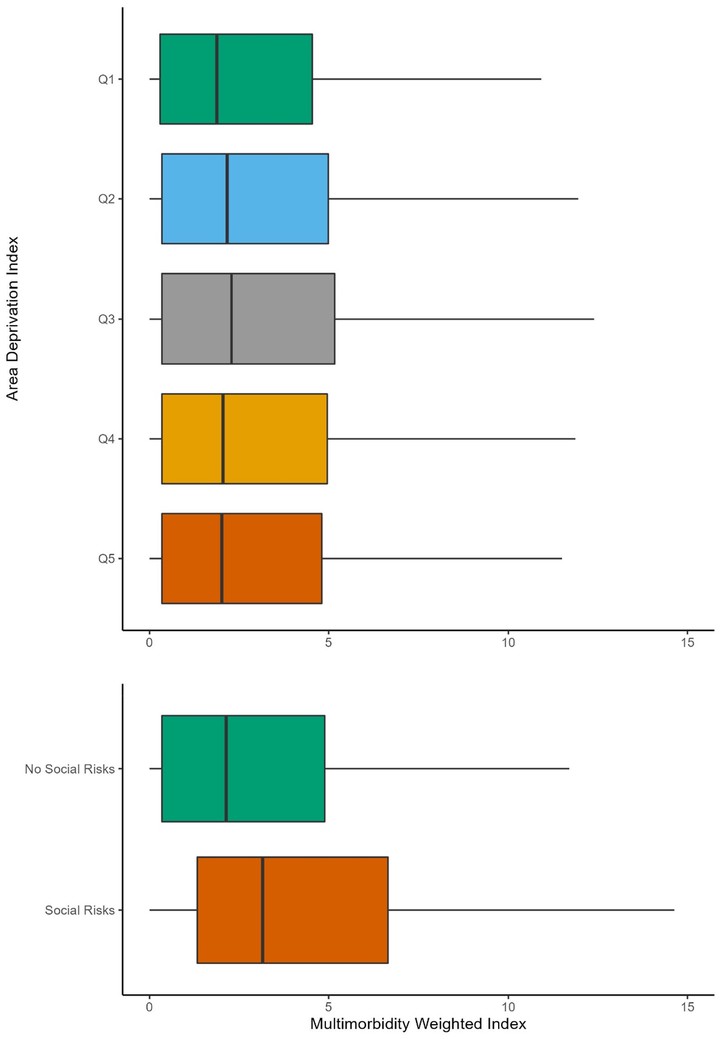Variation in Multimorbidity by Sociodemographics and Social Drivers of Health Among Patients Seen at Community-Based Health Centers

Abstract
Purpose. Understanding variation in multimorbidity across sociodemographics and social drivers of health is critical to reducing health inequities. Methods. From the multi-state OCHIN network of community-based health centers (CBHCs), we identified a cross-sectional cohort of adult (> 25 years old) patients who had a visit between 2019-2021. We used generalized linear models to examine the relationship between the Multimorbidity Weighted Index (MWI) and sociodemographics and social drivers of health (Area Deprivation Index [ADI] and social risks [e.g., food insecurity]). Each model included an interaction term between the primary predictor and age to examine if certain groups had a higher MWI at younger ages. Results. Among 642,730 patients, 28.2% were Hispanic/Latino, 42.8% were male, and the median age was 48. The median MWI was 2.05 (IQR: 0.34, 4.87) and was higher for adults over the age of 40 and American Indians and Alaska Natives. The regression model revealed a higher MWI at younger ages for patients living in areas of higher deprivation. Additionally, patients with social risks had a higher MWI (3.16; IQR: 1.33, 6.65) than those without (2.13; IQR: 0.34, 4.89) and the interaction between age and social risk suggested a higher MWI at younger ages. Conclusions. Greater multimorbidity at younger ages and among those with social risks and living in areas of deprivation shows possible mechanisms for the premature aging and disability often seen in community-based health centers and highlights the need for comprehensive approaches to improving the health of vulnerable populations.